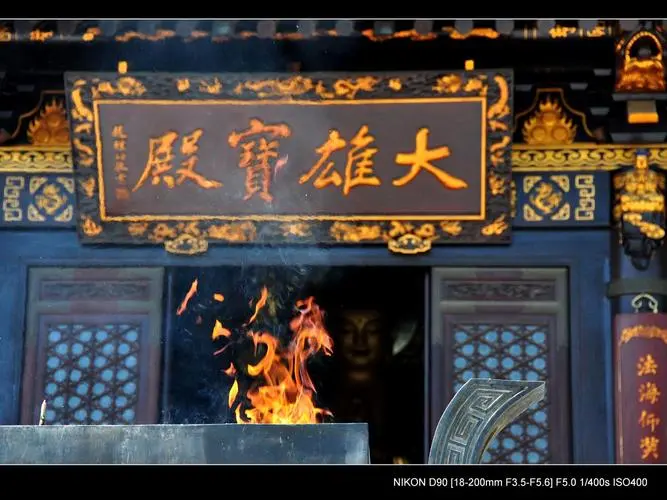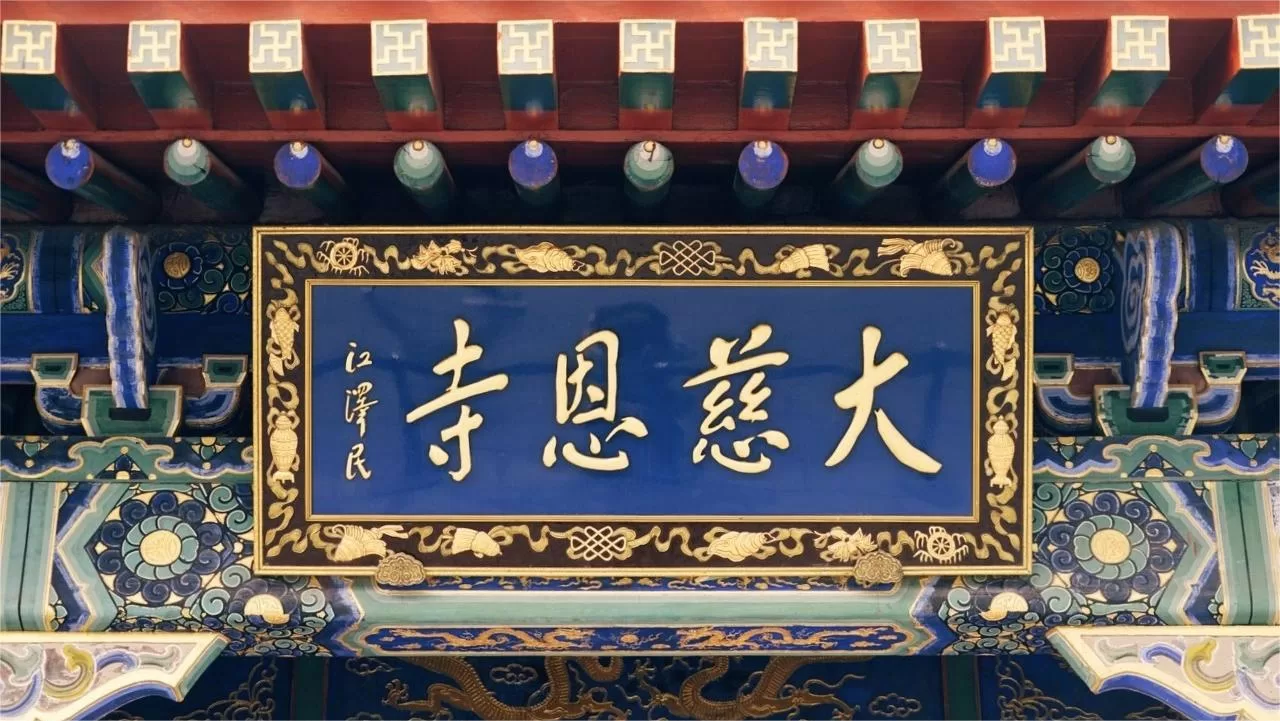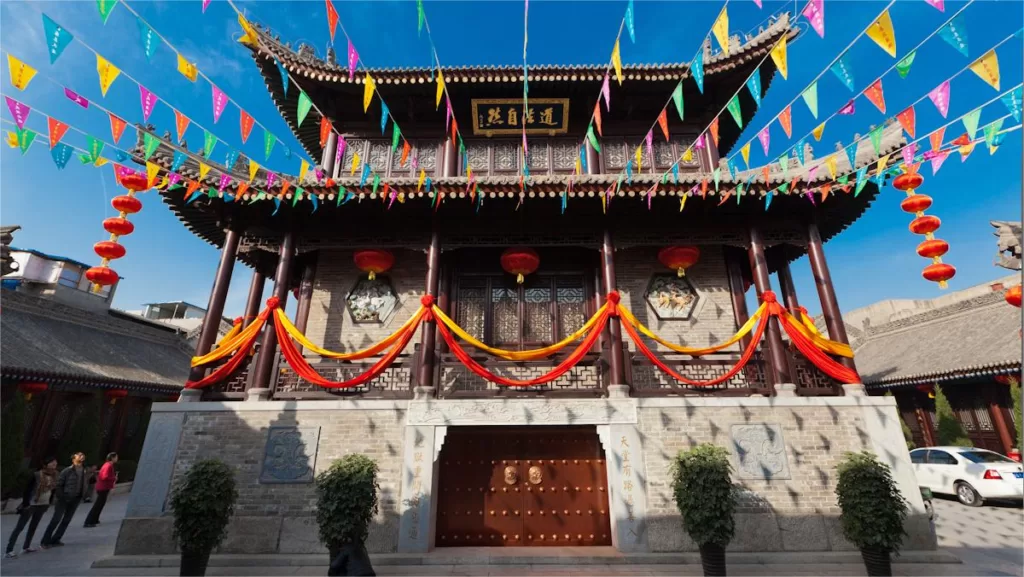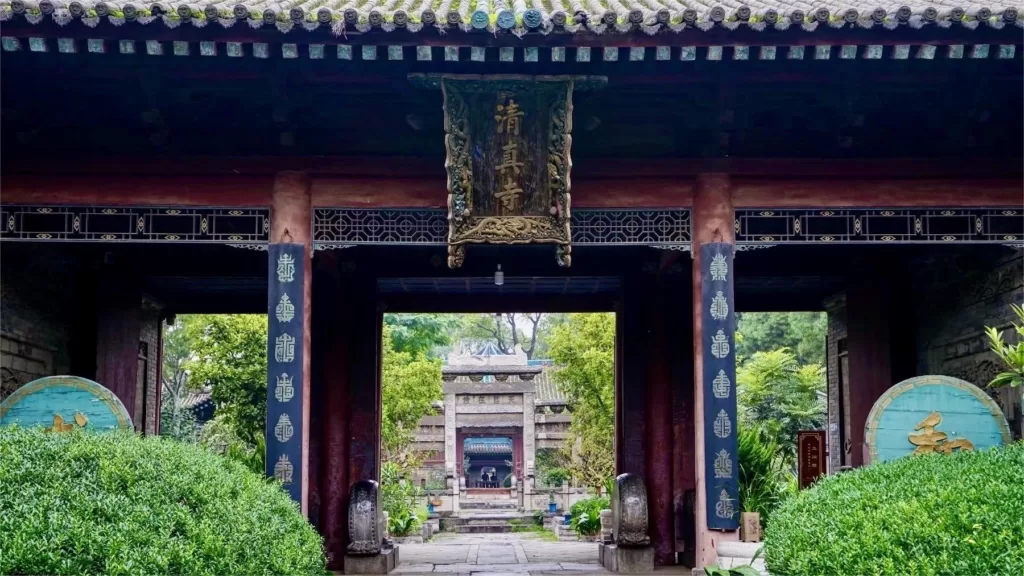Daci’en Temple (大慈恩寺, Big Ci’en Temple), located in the Jinchang District of Tang Dynasty’s Chang’an City (modern-day Xi’an, Shaanxi Province), is a renowned Buddhist temple with a history spanning over 1350 years. It is one of the three major translation centers in Chang’an during the Tang Dynasty. Commissioned by the imperial Li Tang family, Daci’en Temple stands as the most famous and grandiose temple within the city. In the 22nd year of Emperor Taizong’s reign (648 AD), Crown Prince Li Zhi established the temple to commemorate his mother, Empress Wende, Longsun.
Master Xuanzang, known for his epic journey to India to retrieve Buddhist scriptures, presided over the temple’s affairs, led the translation of Buddhist texts, and founded the Yogacara School, one of the eight major Buddhist sects in China. The temple’s Great Wild Goose Pagoda, personally supervised by Xuanzang, further enhances its significance in Chinese Buddhist history, making Daci’en Temple a prominent and revered institution in both domestic and international Buddhist communities.
Table of Contents
- Basic Information
- Location and Transportation
- Highlights of Daci’en Temple
- Vlog about Daci’en Temple
- Useful Tips Summarized from Reviews
- Other Temples in Shaanxi
Basic Information
| Estimated length of tour | 2 hours |
| Ticket price | Adult: 40 RMB Children under 1.2 meters: free |
| Opening hours | 8.30 – 18.00; Last entry: 17.15 |
Location and Transportation
The Daci’en Temple is situated inside the ancient city walls of Xi’an, near the city center and Shaanxi History Museum. The address is 15 Yanta South Road, Yanta District, Xi’an, Shaanxi, China. To get there, visitors can take a taxi or public transportation, such as the bus or subway.
Bus: Take bus No. 21, 22, 23, or 24, get off at Yantaxilu Dongkou Stop (The East Side of Yanta West Road), and the temple is right in front of you.
Subway: Take subway line 3 or 4, get off at Dayanta Station (Giant Wild Goose Pagoda Station), and walk 1000 meters to the south to reach the entrance.
Highlights of Daci’en Temple
Giant Wild Goose Pagoda

The Giant Wild Goose Pagoda is a magnificent Buddhist temple built in the Tang dynasty over a thousand years ago and is a UNESCO World Heritage site. The seven-story pagoda is 64 meters tall and is made entirely of brick, which is a remarkable feat of engineering. It was originally constructed to house Buddhist scriptures brought from India by the famous monk Xuanzang, and has since become an important pilgrimage site for Buddhists. The pagoda offers a stunning view of the city from its top.
Mahavira Hall

Mahavira Hall is the main hall located in the Daci’en Temple, a famous Buddhist temple in China. The hall is dedicated to the worship of Sakyamuni Buddha, who is considered the founder of Buddhism. The hall is a large structure with a grand entrance and houses a golden statue of the Buddha, flanked by two Bodhisattvas, which is the highlight of the hall. The walls are adorned with intricate carvings and beautiful paintings depicting various Buddhist teachings and stories. Visitors can also witness monks and devotees chanting and offering incense as part of their daily rituals. It’s a serene and awe-inspiring place that provides a glimpse into Chinese Buddhist culture and traditions.
Xuanzang Sanzang Hall

The Xuanzang Sanzang Hall in Daci’en Temple showcases the illustrious life of Master Xuanzang in two distinct phases and three different facets, offering a profound glimpse for the world to behold. The Western Wing’s Hall of Radiant Enlightenment presents the experiences and touching deeds of Master Xuanzang from his birth to the age of forty when he embarked on his epic journey to retrieve Buddhist scriptures and return to his homeland, known as the “Quest for Learning and Seeking Dharma” phase.
In contrast, the Eastern Wing’s Prajna Hall delves into Master Xuanzang’s triumphant return to the Tang Dynasty, where he received a grand welcome, and his inspirational efforts in translating scriptures and propagating Buddhist teachings until his final passing. This phase is referred to as the “Translation of Scriptures and Propagation of Dharma” phase.
Nestled between these two wings, the Great Enlightenment Hall delves into the profound religious context surrounding the historic event of “Xuanzang’s Journey for Scriptures,” weaving together the core Buddhist cultural ideas of the past, present, and future across three temporal dimensions.
Palm Leaf Manuscripts

At Daci’en Temple, you can find a unique collection of Pali texts. Before the Xuanzang’s epic journey to India, ancient Indians had not yet mastered papermaking. As a result, they inscribed their sacred scriptures on specially processed palm leaves. These texts, known as “Palm Leaf Manuscripts,” boast a history of over 2500 years. Among the 657 scrolls of scriptures brought back by Xuanzang, only a few precious palm leaf manuscripts have survived, numbering fewer than 20. These rare artifacts are treasured for their role in preserving and transmitting the teachings of Buddhism and hold immense historical and cultural significance.
Wild Goose Pagoda Square

The Wild Goose Pagoda Square surrounding Daci’en Temple is a vast complex spanning nearly 1000 acres, with the iconic Wild Goose Pagoda at its center. It is divided into various sections, including the North Square, South Square, East Courtyard, West Courtyard, South Courtyard, Daci’en Temple, a pedestrian street, and a commercial area.
The North Square features two hundred-meter-long group sculptures, eight sets of large-scale figurative sculptures, and forty landscape reliefs. The South Square, located in front of Daci’en Temple, serves as an expression of Buddhist culture. The West Courtyard, situated on the west side of the North Square, highlights garden features, while the East Courtyard, on the east side of the North Square, is a cultural venue emphasizing the regional characteristics of Shaanxi and hosts “The Grand Garden of Chinese Opera,” a place dedicated to traditional Chinese performing arts. This square complex represents a harmonious blend of cultural, historical, and recreational elements.
Vlog about Daci’en Temple
Useful Tips Summarized from Reviews
Ideal Timing: Daci’en Temple is a great place to visit after lunch. You can explore the temple, take a leisurely stroll, and rest in a relatively less crowded environment compared to other times.
Listen to the Wind Chimes: Pay attention to the numerous wind chimes hanging from the eaves of the Great Wild Goose Pagoda. When the wind blows, they produce a crisp and pleasant sound, adding to the overall peaceful ambiance of the temple complex.
Explore the Pagoda: Don’t miss the inscriptions on the outer walls of the Great Wild Goose Pagoda. These inscriptions, dating back to the Tang Dynasty, provide valuable historical and cultural insights. Take your time to appreciate the intricate details and historical significance of these inscriptions.
Avoid Traffic Congestion: It’s common for traffic to get congested around Daci’en Temple, especially during peak hours. To avoid getting stuck in traffic, consider using public transportation or parking your vehicle at your hotel and taking the subway to the temple. This way, you can save time and avoid the hassle of finding parking near the temple entrance.






Travel Tips:
1. After visiting Da Ci’en Temple, you can head to Datang Furong Garden (大唐不夜城) right away, so I recommend visiting in the afternoon to catch the night view of Datang Furong Garden.
2. To get a close-up view of the Giant Wild Goose Pagoda, you need to enter the Da Ci’en Temple, but a separate ticket is required for going up the pagoda.